What Animals Live In India?
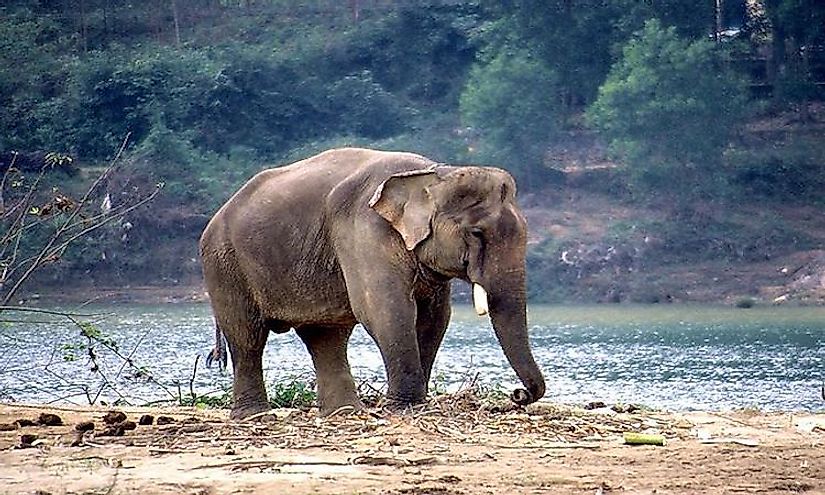
India is home to some of the most majestic, unique, and rare species of Indian wildlife. Skilled predators like the Royal Bengal tiger and the Indian leopard, megaherbivores like the Asian elephant and the Indian rhinoceros, colorful birds like the blue-winged parakeet and the Indian peafowl, the highly venomous Indian cobra, the graceful blackbucks, and the mischievous Nilgiri langur are all denizens of the Indian forests and grasslands. India is home to about 7.6% of all mammalian, 6.2% of all reptilian, and 12.6% of all avian species in the world. Here, we present a list of some of the iconic animals of India.
18. Malabar Giant Squirrel -
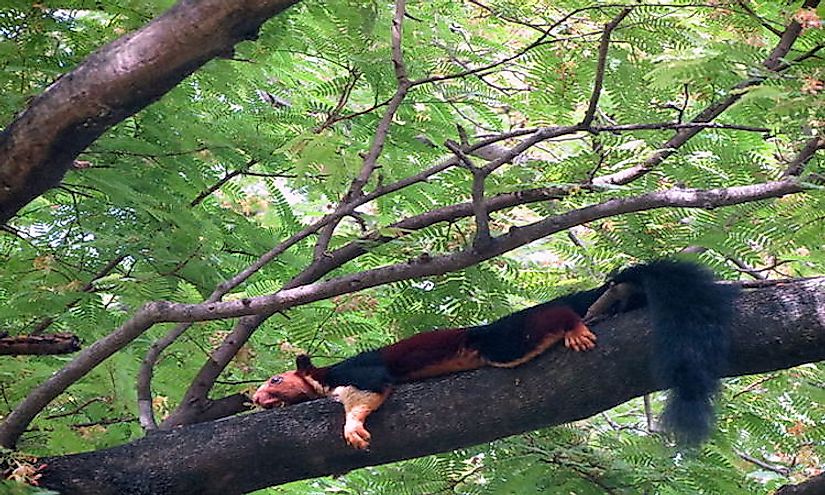
The Malabar giant squirrel (Ratufa indica) is a native Indian species and thus finds mention in our list of Indian animals. The species is arboreal and herbivorous in nature. These animals are generally solitary and interact with each other primarily during the breeding season. The Malabar giant squirrel inhabits the moist evergreen, mixed deciduous, and deciduous forests of peninsular India. In 1984, the Bhimashankar Wildlife Sanctuary was established with the primary aim of protecting the habitat of these giant animals. The sanctuary is located in the Pune District of Maharashtra in India.
17. Malabar Parakeet -
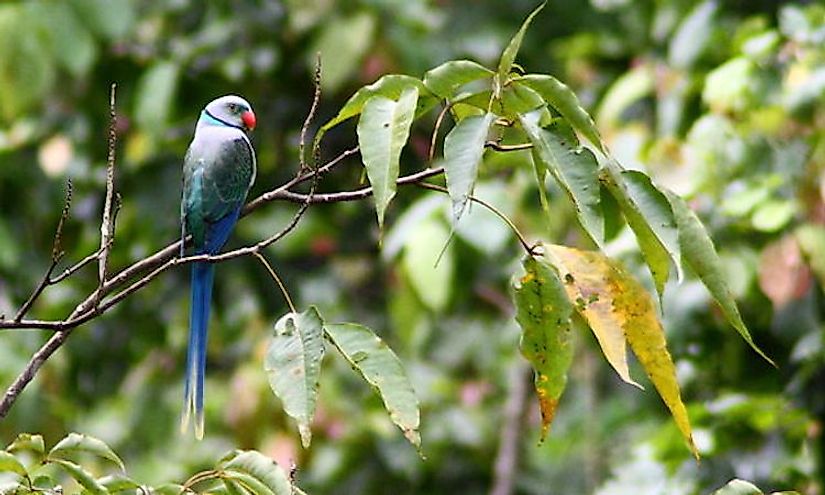
The Malabar parakeet (Psittacula columboides) is a unique blue-winged parakeet that is endemic to India’s Western Ghat region. The parakeet has a bluish gray color with a black neck ring and a yellow-tipped tail. The females have a black bill and males possessing a red upper mandible. The black neck ring in the male is accompanied by a bluish-green lower edge while in the female only the black collar is present. The Malabar parakeet prefers to live in tree crevices, especially those formed by woodpeckers and barbets. The parakeets are sometimes traded as pets though such trade is illegal in India.
16. Nilgiri Tahr -
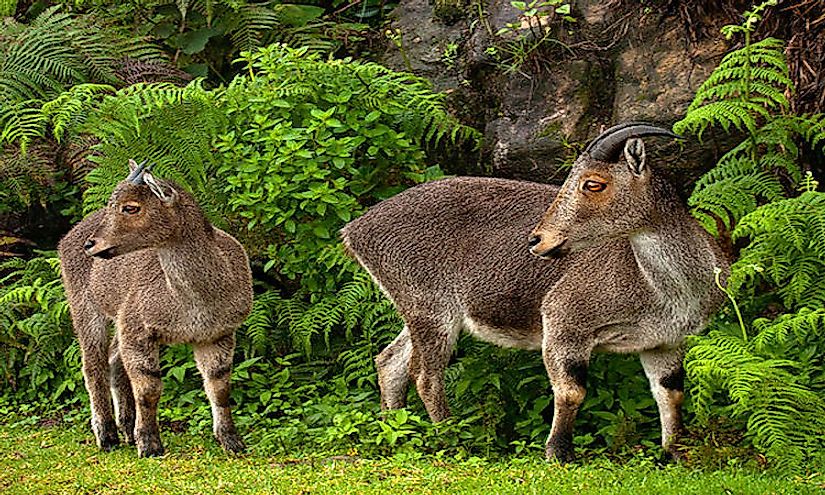
The endangered and endemic species, the Nilgiri Tahr or the Nigiri ibex (Nilgiritragus hylocrius) inhabits the Nigiri Hills in the Western Ghats located in the Indian states of Kerala and Tamil Nadu. Thus, the Nilgiri Tahr deserves mention in our list of Indian animals. The Nilgiri Tahr is a stocky goat where males are larger than females and have a darker colored fur than the females. The animal lives in the montane grasslands of the Western Ghats at elevations of about 3,900 to 8,500 feet. Hunting and poaching have severely reduced the numbers of this species. The largest population of the Nigiri Tahr can be observed in the Eravikulam National Park in the Indian state of Kerala. Over 800 individuals of this species were present in this park as per the 2014 census of the Nilgiri Tahr.
15. Indian Bustard -
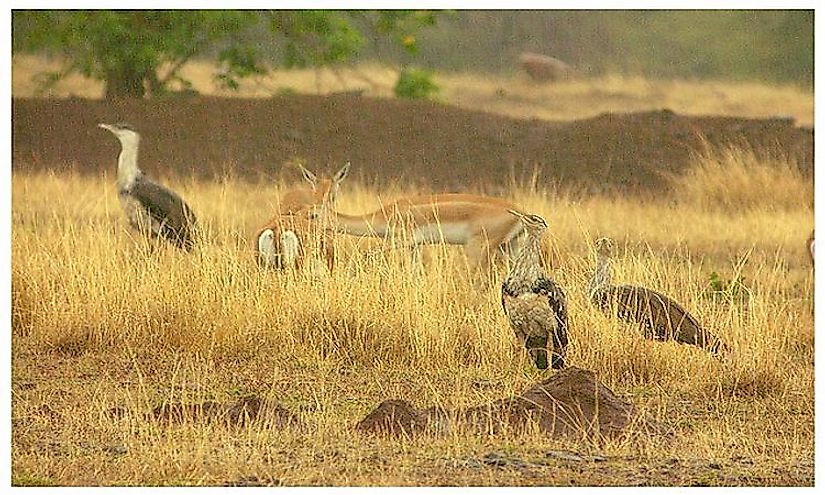
The Great Indian bustard (Ardeotis nigriceps) is a large bird whose appearance is often compared to that of the ostrich. It is one of the heaviest of the flying birds and is found in north-western India and neighboring Pakistan. The bird is omnivorous in nature and feeds on both plant parts and insects. The bird inhabits open country with thorn scrub as well as arid and semi-arid grasslands. In 2013, the Indian government initiated the Project Great Indian Bustard to speed up the conservation of this fast disappearing species. The Great Indian Bustard Sanctuary was set up in 1979 at Solapur, Maharashtra to provide a safe haven for this bird.
14. Indian Antelope -
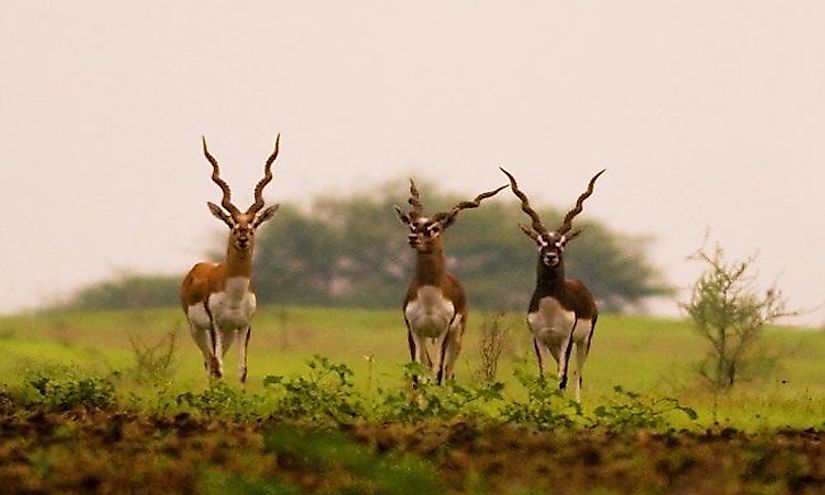
The Indian antelope (Antilope cervicapra), more commonly known as the blackbuck is native to India and Nepal. The antelopes are about 74 to 84 cm tall and weigh around 20–57 kg. Males have long, ringed horns, dark brown to black upper parts and legs, and white underparts. Females have an overall tan or yellowish-fawn color and might develop horns. The animals are diurnal and herbivorous in nature. They inhabit grassy plainlands and thin, forested area. The blackbuck is currently classified as Near Threatened by the IUCN. Though Hindu villagers in India and Nepal protect the blackbuck for its religious significance, hunting by the British in the past and poachers in the current times, have reduced the numbers of this species. Under the Schedule I of India’s Wildlife Protection Act, 1972, hunting of the blackbuck is completely prohibited. The animal, once of the iconic species of Indian wildlife, can be sighted at various national parks and sanctuaries in the country like the Gir Forest National Park (Gujarat), the Velavadar Wildlife Sanctuary (Gujarat), Ranthambore National Park (Rajasthan), Great Indian Bustard Sanctuary (Maharashtra), and others.
13. Indian Peafowl -
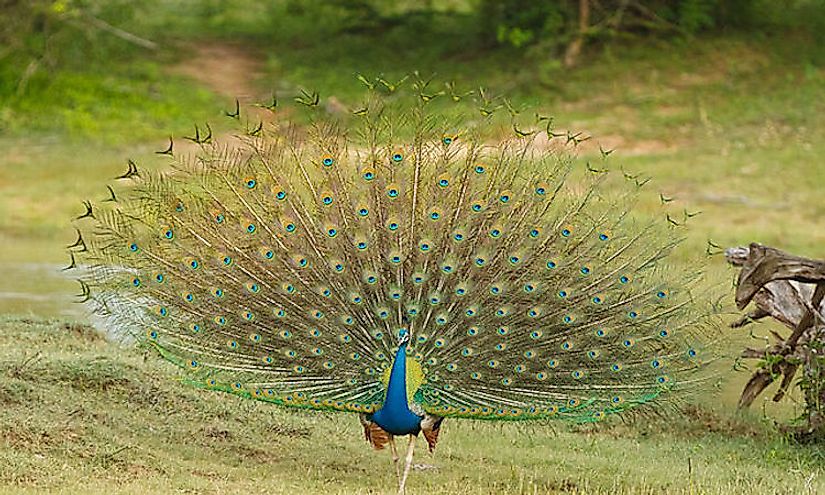
Known for its vibrant colors and spectacular appearance, the Indian peafowl (Pavo cristatus), more specifically, the male of this species, the peacock enjoys the status of being the National Bird of India. The males of this peafowl are more vividly colored than the females and are famous for their spectacular feather displays during the mating season in monsoon, also referred to as the “peacock dance.” The peafowl is distributed throughout the country where it is protected from hunting by law. The loud alarm calls of the bird in the forests of India often symbolize the presence of a predator like a tiger in the near vicinity.
12. Nilgiri Langur -
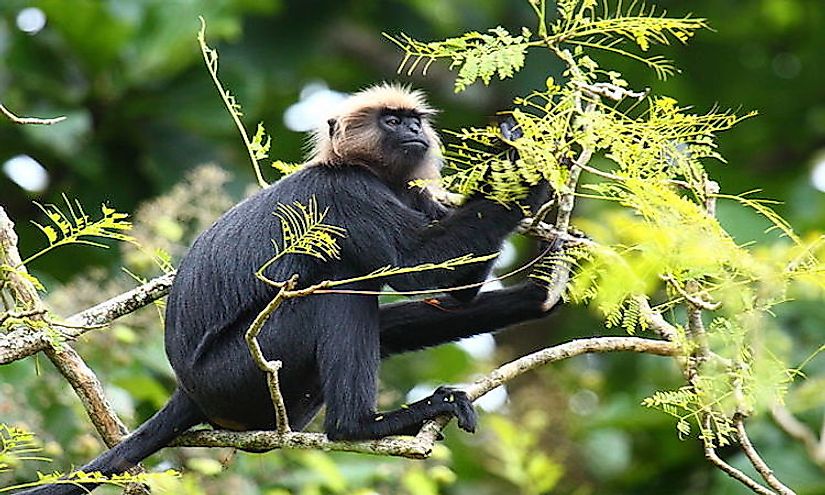
The Nilgiri langur (Trachypithecus johnii) is an Indian endemic species that inhabits the Nilgiri Hills in the Western Ghats of South India in the Indian states of Karnataka, Tamil Nadu, and Kerala. Glossy, black fur covers the body of the langur while golden-brown fur covers its head. 9-10 monkeys live in a single troop and forage together for fruits, leaves, shoots, and other plant parts. Deforestation and poaching for flesh and fur have severely decimated populations of the Nilgiri langur, and it is thus classified as Vulnerable by IUCN.
11. Indian Cobra -
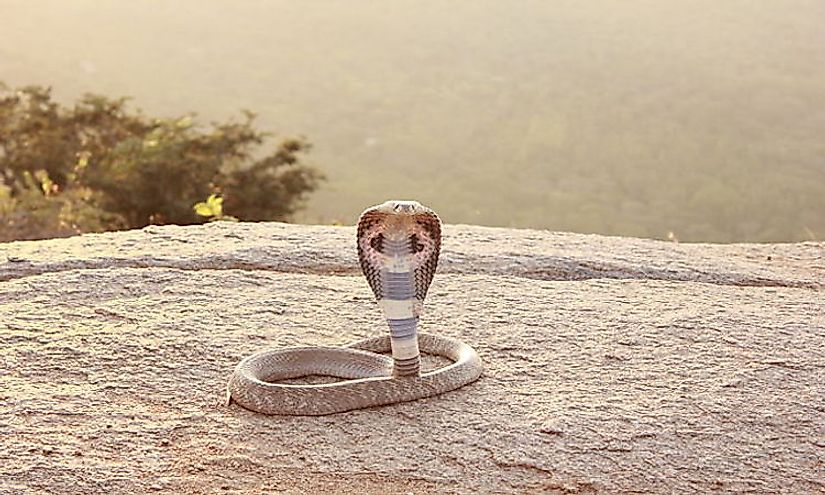
The Indian cobra or the spectacled cobra (Naja naja) is one of the most venomous snakes found in India and is responsible for a large number of snake bite fatalities in the country. The species has widespread distribution throughout the Indian subcontinent with the exception of high altitude mountains above 2,000 feet and desert regions. It is also found in heavily populated regions where it is attracted by rats and mice dwelling in people’s homes. The Indian cobra produces a powerful venom which is neurotoxic in nature. The venom triggers muscle paralysis and in lethal doses kills the victim by cardiac arrest or respiratory failure.
10. Lion-Tailed Macaque -
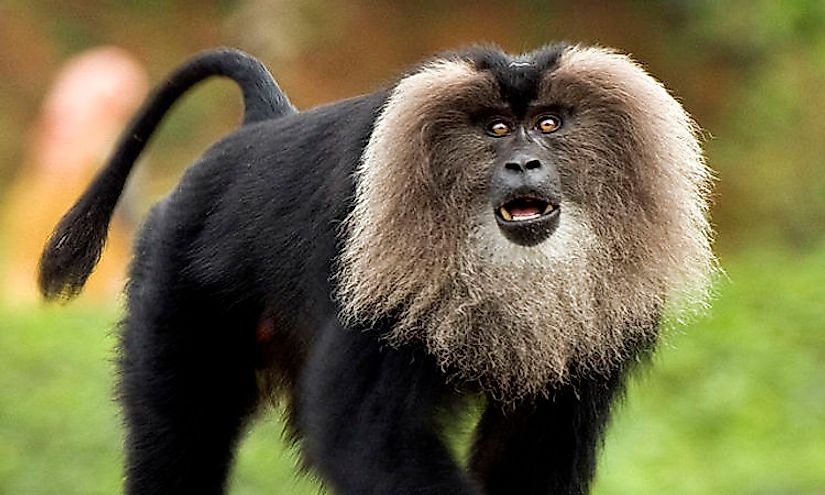
The lion-tailed macaque or the wanderoo (Macaca silenus) is endemic to South India’s Western Ghats and thus finds mention in this list of Indian animals. The macaque has a black, hairless face and a silver-white mane that drops down from the cheeks to the chin. The tail of the macaque has a black tuft at the end which resembles the tail of the lion, hence the name lion-tailed macaque. The species can live up to 20 years in the wild. The animal inhabits the canopies of tropical moist evergreen forests and is diurnal, arboreal, and omnivorous in nature. Only about 3,000 to 3,500 individuals of this endangered species are left in the wild in the Indian state of Kerala. Loss of forested land due to the development of large plantations of tea, coffee, etc., and human settlement near such plantations have decimated the lion-tailed macaque populations since these animals tend to shy away from humans and their land.
9. Gangetic Dolphin -
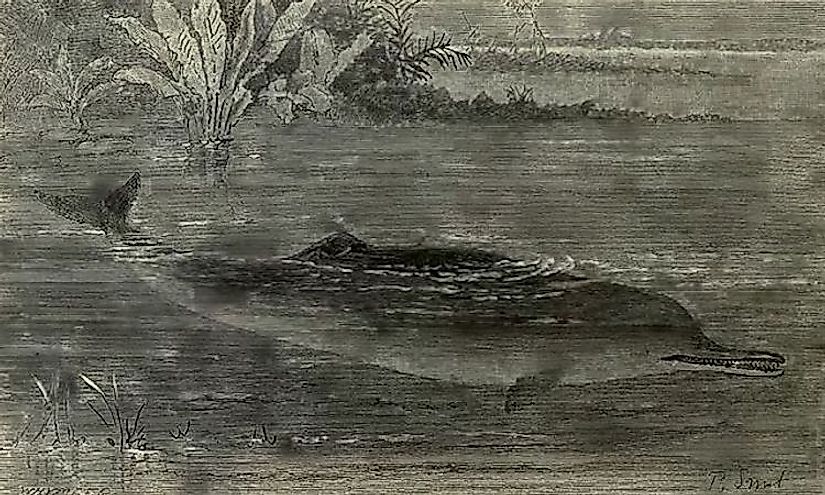
Two extant subspecies of the South Asian river dolphin (Platanista gangetica) include the Ganges River dolphin and the Indus River dolphin. The former is found in the Indus River and its tributaries in India and Pakistan while the latter is found in the Brahmaputra and Ganges rivers and their tributaries in India, Bangladesh, and Nepal. The dolphins are classified as Endangered by the IUCN. River pollution, loss of river depth, hunting and poaching, death as bycatch are some of the reasons for the decline of this species. Several efforts are being made by the Indian Government to save the Gangetic River dolphin including the designation of this species as the national aquatic animal of the country. A stretch of the river in the Indian state of Bihar has also been declared as the Vikramshila Gangetic Dolphin Sanctuary to provide a haven for these aquatic species.
8. Gharial -
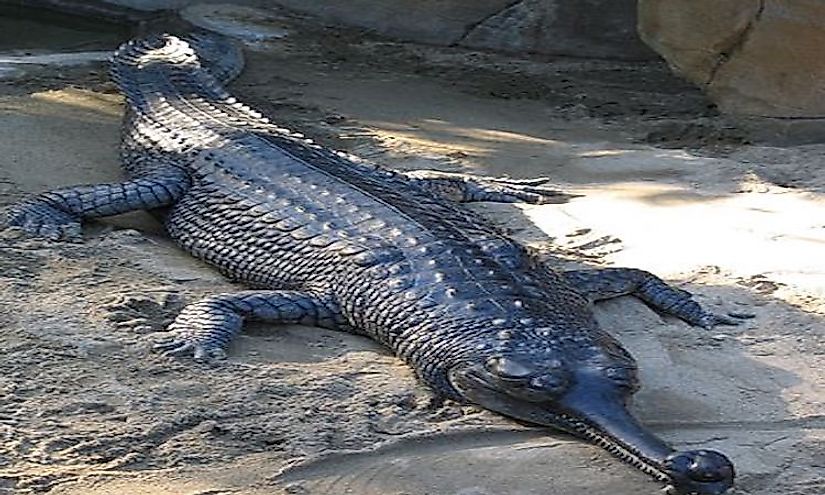
The gharial, also known as the gavial (Gavialis gangeticus) is a crocodilian that is native to the Indian subcontinent. It is a critically endangered species and only around 235 surviving individuals of this species remain in the wild. It is one of the longest reptiles and can attain lengths of 20.5 ft. Fish forms the main diet of this crocodilian and its 110 razor-sharp interdigitated teeth in its long and thin snout is well adapted to catch and consume fish. The males of this species have a pot -shaped bulge on their snout from where the gharial received its name ("ghara" in the local language means an earthenware pot). Once widespread from the Irrawaddy River in the east to the Indus in the west, today, the range of the gharial is reduced to 2% of its former range. Loss of habitat, high levels of water pollution and water toxicity, depletion of food due to overfishing, and death as bycatch threaten to lead the gharial to extinction. The Government of India has set up several crocodile sanctuaries and rehabilitation centers like the National Chambal Sanctuary where gharials are bred in captivity, and the offsprings are released in the wild. Still, success has been low since the threats faced by the gharials continue to exist. Hope it is not too late to save this highly threatened species.
7. Sloth Bear -
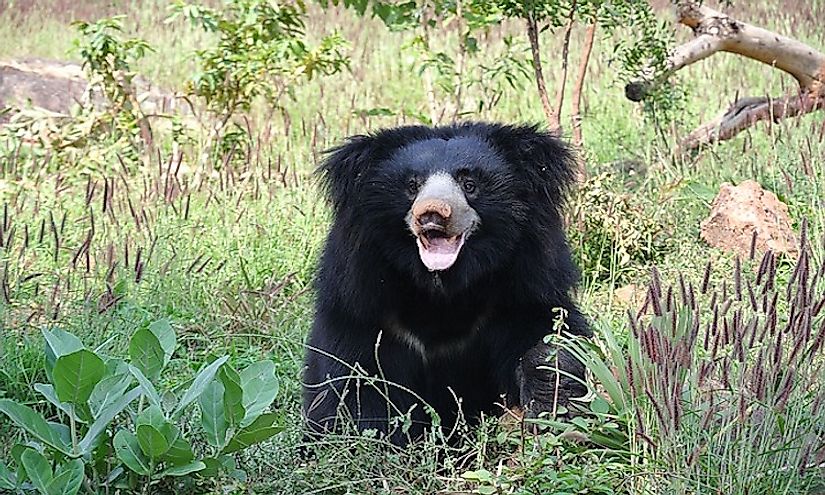
The sloth bear or labiated bear (Melursus ursinus) is a nocturnal, insectivorous species that is native to the Indian subcontinent. The sloth bear feeds on insects, honey, and fruits and has specially adapted mouth parts to suck insects. The bears have long, shaggy coats, a lankier built than the black and brown bears, and a mane around the face. The bears might attack humans when threatened or encroach human settlements in search of food. The bears are currently classified as Vulnerable as they suffered an alarming population decline due to habitat loss and hunting. Currently, they are protected by law, and several sloth bear sanctuaries have been set up across India to maintain stable populations of this species.
6. Mugger Crocodile -
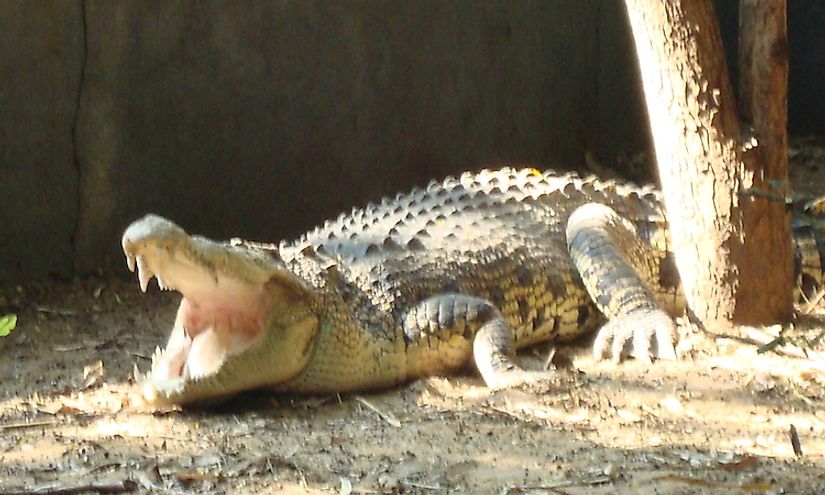
The mugger crocodile or the Indian crocodile (Crocodylus palustris) is a crocodilian that is widely distributed across the Indian subcontinent. The mugger inhabits ponds, lakes, marshes, swamps, and sluggish river habitats. Males are larger than the females, and its has the largest snout among all extant species of crocodiles. Mugger crocodiles are ambush predators and have a large prey base including birds, reptiles, fish, and mammals. These crocodiles are large enough to be a threat to human life. Habitat loss, hunting, and human persecution pose threats to the survival of this species which is classified as Vulnerable by the IUCN.
5. Indian Leopard -
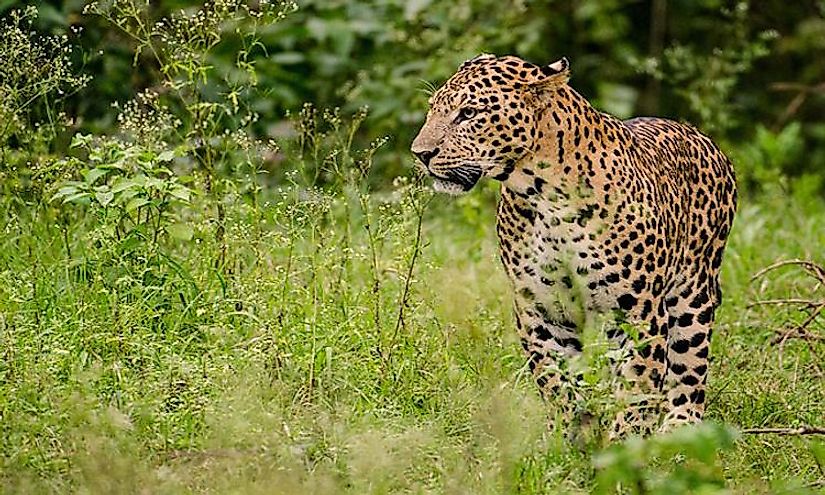
The swift and fierce predator, the Indian leopard (Panthera pardus fusca) is distributed across the Indian subcontinent. These animals are nocturnal carnivores that are solitary and elusive in nature. They are powerful swimmers, climbers, and runners. Some leopards of India like the man-eating leopard of Rudraprayag have gone down in history as one of the fiercest man-eating beasts ever. A countrywide survey conducted in 2014 with the exception of the northeast region in India yielded the figure of 7,910 leopards surviving in the surveyed areas. The actual figure could be about 12,000 to 14,000 individuals. Today, the Indian leopard is classified as Neat Threatened by the IUCN. Habitat loss, illegal trade for body parts and skin, persecution during man-animal conflicts are some of the primary reasons killing these animals in the subcontinent.
4. Greater One-Horned Rhinoceros -
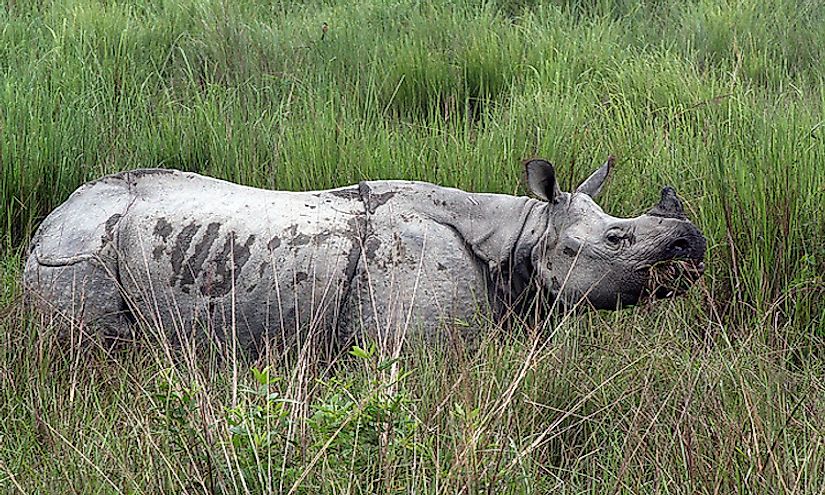
The Indian rhinoceros or the greater one-horned rhinoceros (Rhinoceros unicornis) is one of the iconic species of the Indian wilds and thus finds mention in this list of Indian wildlife. The rhinoceros which once range throughout the Indo-Gangetic plains of the northern part of the Indian subcontinent has now a highly constricted range due to large-scale deforestation and habitat fragmentation. The demand for the horn of the rhinoceros for the preparation of Chinese traditional medicines has also led to the poaching of thousands of rhinos over the decades. Currently, the Indian rhinoceros is classified as Vulnerable by the IUCN. The animals inhabit riverine forests and alluvial grasslands in northern India, Bhutan, and Nepal. The Kaziranga National Park in the northeast Indian state of Assam hosts a significant population of the Indian rhinoceros.
3. Asian Lion -
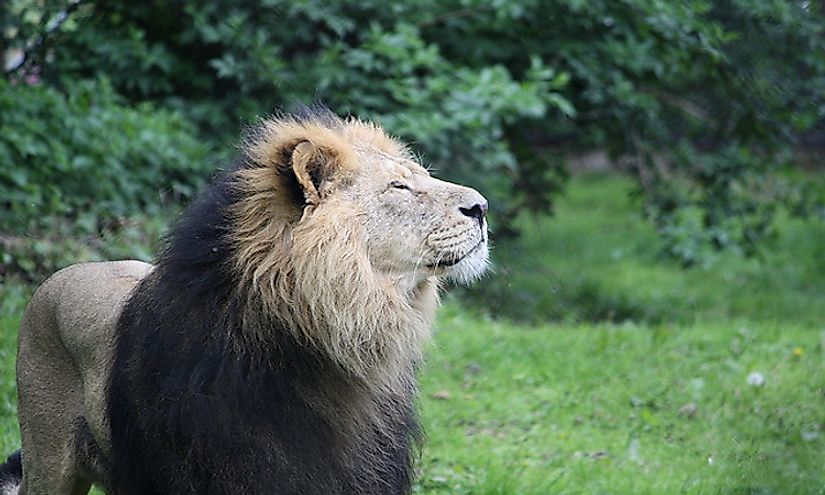
The Asiatic lion or the Indian lion (Panthera leo persica) is one of the big five cat species found in India, the others being the Bengal tiger, clouded leopard, snow leopard, and the Indian leopard. The lion thus finds mention in our list of Indian wildlife. Though the Asiatic lion once roamed across vast territories in Europe and Asia, today, wild populations of this species is limited to the Gir Forest National Park in the Gujarat State of India. The Asiatic lion differs from the African one in having a less developed mane, a larger tail tuft, and a less inflated auditory bullae. The 2015 census revealed that the numbers of the Asiatic lion have increased significantly. 523 lions were counted in an area as large as 20,000 square km.
2. Indian Elephant -
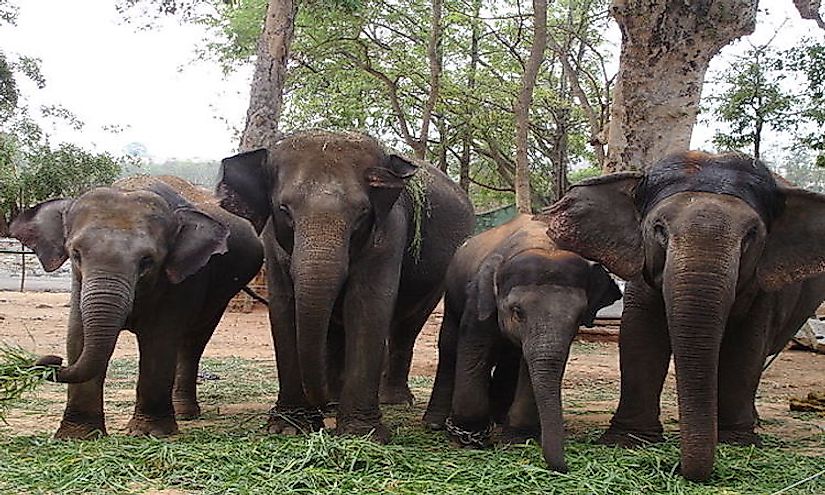
A visit to the Indian forests is never complete without catching a glimpse of the most respected species of the forest, the highly social and intelligent Indian elephant (Elephas maximus indicus). The elephants in India inhabits evergreen and semi-evergreen forests, moist and dry deciduous forests and also grasslands. The elephants are referred to as megaherbivores as they consume as much as 150 kg of plant matter daily. Humans have not left this species at peace, and the Indian elephant’s population has declined by at least 50% over the last three generations. This has led to the classification of this animal as Endangered by the IUCN. Habitat loss, poaching for ivory, road and rail accidents, habitat fragmentation, human persecution have all led to a rapid decline in the population of these giants of the Indian forests. Currently, they are protected by Indian law, and any form harm inflicted to these elephants is subject to prosecution and punishment.
1. Royal Bengal Tiger -
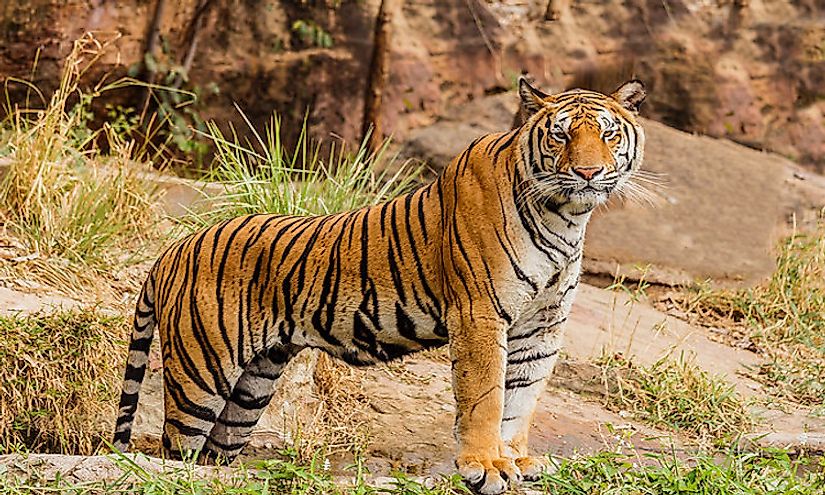
The national animal of India and Bangladesh, the Royal Bengal Tiger, (Panthera tigris tigris) is the pride of Indian forests. The Bengal tiger is famous across the world for its majestic appearance, fierce nature, excellent predatory skills, and conservation value. Conserving the tiger is equivalent to conserving the entire forest ecosystem where the tiger resides. The Bengal tiger was on the verge of extinction, and only 1,411 tigers were believed to exist in 2010. This caused a hue and cry and the Indian government, national and international conservation organizations, and individual conservationists came together to make plans to save the tigers. Good news came in 2014 when the Royal Bengal tiger population almost doubled to 2,226. Still, threats to this species continue to exist, and extreme caution and monitoring are required to ensure the numbers of this magnificent animal steadily increase in the coming decades.











